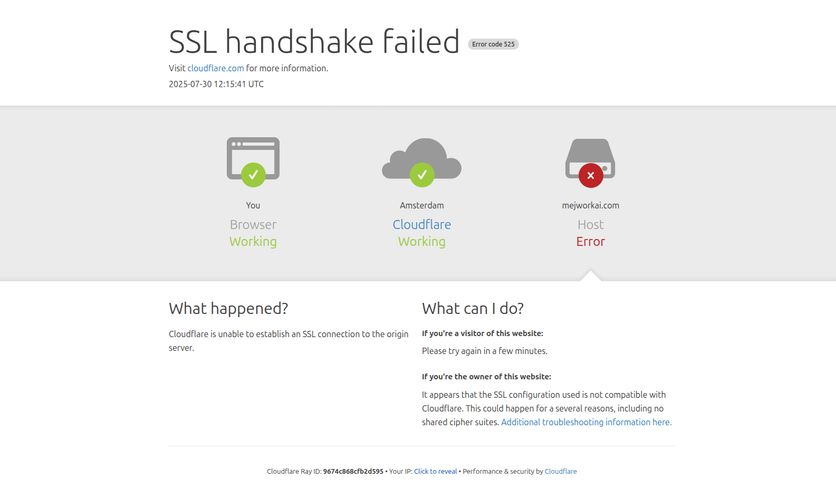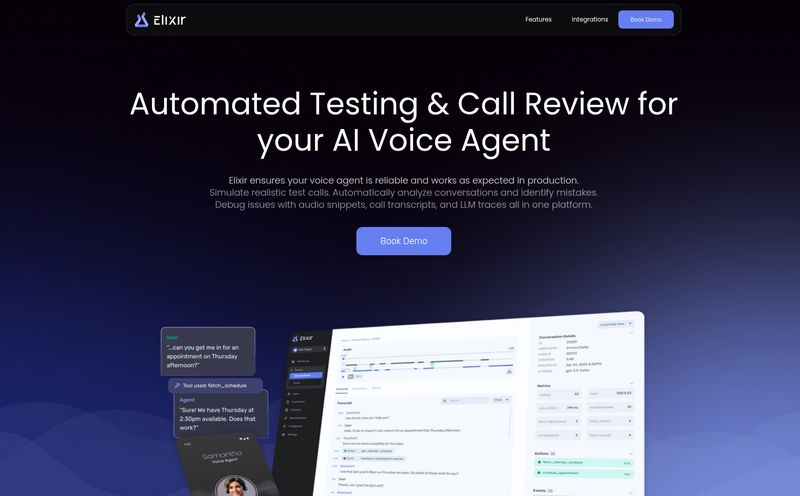If you’re in the trenches building anything with AI right now, you know the struggle. It's a chaotic mix of endless text files named things like prompt_v3_final_final.txt, wrestling with different API endpoints, and trying to explain a complex chain of logic to a teammate over Slack. It feels less like cutting-edge engineering and more like digital arts and crafts with a very unpredictable glue gun. I’ve been there. My team's been there. It’s a mess.
So, whenever a tool comes along promising to bring some order to this chaos, my ears perk up. Lately, the name I've been hearing is AgentRunner. Their big claim? To simplify AI app development with visual prompt engineering. It sounds good, sure, but we’ve all been burned by shiny new tools that are more hassle than they're worth. So I decided to take a proper look, peel back the marketing layer, and figure out if this is the real deal.
What is AgentRunner, Really?
At its heart, AgentRunner is an all-in-one AI workflow builder. But that's just a fancy way of saying it’s a visual playground for connecting AI models and prompts together. Think of it like a flowchart tool—maybe something like Miro or Lucidchart—but instead of diagramming a business process, you’re building an AI’s brain. Each box isn’t just a shape; it’s an action. It could be a prompt sent to GPT-4, a data lookup, or a logical step that decides what to do next.
You’re literally drawing the path your data and queries will take through different AI models. This visual approach is the core of what they’re selling. It’s about getting the logic out of your head (or out of a confusing script) and onto a canvas where you can see it, tweak it, and collaborate on it. For a visual thinker like me, that’s immediately appealing.

Visit AgentRunner
The Features That Actually Matter
A long list of features is one thing, but which ones actually solve problems? After poking around, a few things stood out to me as genuinely useful, not just buzzword-bingo fillers.
The Visual Editor: More Than Just Pretty Boxes
The visual programming interface is the main event. Being able to drag and drop nodes, connect them with lines, and build out complex sequences is a game-changer. This is where prompt chaining comes to life. You can have an initial prompt go to OpenAI's GPT-4 to brainstorm ideas, take that output, and feed it into a second prompt that formats it for a specific tone using Claude, then a third that translates it. Trying to code that manually is tedious and error-prone. Seeing it laid out visually? It just clicks.
A Central Hub for Your Prompts (and Sanity)
This one hit close to home. Centralized prompt management means no more hunting through folders. Every prompt for a project lives in one place. But the real hero here is prompt versioning. We've all done it: tweaked a prompt, broke something, and then couldn't remember the exact wording that worked so well yesterday. Versioning is like a time machine for your prompts. You can test a new version, see how it performs, and roll back instantly if it's a dud. This encourages experimentation without the fear of losing your progress. It's a simple concept, but absolutely critical for professional development.
Playing Nicely with Others: AI Model Integration
AgentRunner isn't trying to lock you into a single ecosystem. Their site mentions easy integration with models like OpenAI, Claude, Llama, and others. This is huge. The AI space moves at a ridiculous pace; a new, better model could drop next week. Being able to swap models in and out of your workflow without rewriting everything is a massive strategic advantage. It lets you use the best tool for each specific job, rather than being stuck with a single provider's hammer for every problem.
From Sandbox to Production: API Access and Deployment
A cool workflow is just a diagram if you can’t use it. AgentRunner provides API access to your prompts and chains. This means once you've built and tested your visual workflow, you can call it from your actual application with a simple API request. They also include tools for testing and performance monitoring, which signals that this platform is built for serious, production-level work, not just for tinkering.
Who Is AgentRunner For? (And Who Should Skip It?)
I think this tool has a pretty clear audience. If you're an AI developer, a dedicated prompt engineer, or part of a product team building AI-powered features, AgentRunner could slot right into your workflow. It seems perfect for rapid prototyping and managing the growing complexity of multi-step AI agents. Agencies building AI solutions for clients could also get a lot of mileage out of the collaborative features.
But who isn't it for? Well, it is a cloud-only solution. If your company has iron-clad rules about everything needing to be on-premise, this won't work for you. And while it’s visual, don't mistake that for “no-skill-required.” There's still a bit of a learnign curve to understand the logic and how to best structure your workflows. Some might argue that a visual tool dumbs down the process, but I disagree. I'd argue it accelerates iteration, and in the AI race, speed of iteration is everything. It frees up brainpower from boilerplate code to focus on the actual prompt craft and logic.
Let's Talk Money: The AgentRunner Pricing Mystery
Here’s the part where I'd normally break down the pricing tiers. But, interestingly, there’s no public pricing page on the AgentRunner site. The pricing link in their menu was actually broken when I checked. This usually means one of two things: they're either still finalizing their pricing model, or they're targeting enterprise clients with custom quotes.
Given the features like “Built for Teams” and “Security and Compliance,” I’d bet on a tiered SaaS model—probably a free tier for individuals to try it out, a pro/team tier with more features, and an enterprise plan for large organizations. The call-to-action is to “Create a Free Account,” so it seems you can get your hands on it without talking to a sales rep, which is always a good sign.
My Honest Take on the Pros and Cons
So, cutting to the chase. The big win for me is the sheer speed of iteration. Being able to visually chain prompts and test them on the fly without getting bogged down in code is a massive advantage. The collaborative aspect is also huge; it turns prompt engineering from a solo, arcane art into a transparent team sport. Having version control built-in is just the cherry on top. However, it's not a magic wand. The reliance on the cloud will be a non-starter for some, and you are depending on AgentRunner to maintain robust connections to the external AI models you use. It’s a layer of abstraction, and with any abstraction, you trade some direct control for convenience.
Frequently Asked Questions
- What exactly is AgentRunner?
- AgentRunner is a cloud-based platform that allows you to build, manage, and deploy AI workflows using a visual editor. It helps you chain together prompts and different AI models to create complex applications without writing extensive code.
- What AI models can I use with AgentRunner?
- It's designed to be model-agnostic, offering easy integration with popular large language models (LLMs) like those from OpenAI (e.g., GPT-4), Anthropic (Claude), and open-source models like Llama.
- Is AgentRunner a good tool for solo developers?
- Absolutely. While it has powerful team features, a solo developer can benefit immensely from the visual builder, prompt management, and versioning to speed up their personal projects and organize their work.
- Can I deploy my AI workflows from AgentRunner?
- Yes. AgentRunner provides API access to your completed workflows (or “chains”), allowing you to integrate them into your own applications, websites, or services.
- How does prompt versioning work in AgentRunner?
- It allows you to save different versions of your prompts as you edit them. This creates a history, so you can compare the performance of different prompt variations and revert to a previous, better-performing version if needed.
- Is AgentRunner secure for business use?
- The platform advertises security and compliance features like encrypted API key storage and role-based access controls, which are designed to make it suitable for professional and team environments.
So, Is AgentRunner Worth Your Time?
After digging in, my answer is a pretty solid yes. If you're feeling the pain of managing a growing library of prompts and the logic that connects them, AgentRunner presents a genuinely compelling solution. It’s a tool that seems to understand the real-world friction points of AI development. It replaces the chaos of text files and scripts with a structured, visual, and collaborative environment.
It won't write your amazing prompts for you, but it gives you a much better workshop to build them in. If you're serious about building scalable and maintainable AI applications, I'd say it's definitely worth your time. Go sign up for that free account and play around. You'll know pretty quickly if it's the missing piece in your AI toolkit.
Reference and Sources
- AgentRunner Official Website
- OpenAI's Blog on API Functionality (for context on advanced AI chaining)
- Visual Programming Overview by Fireship (for a general concept overview)



